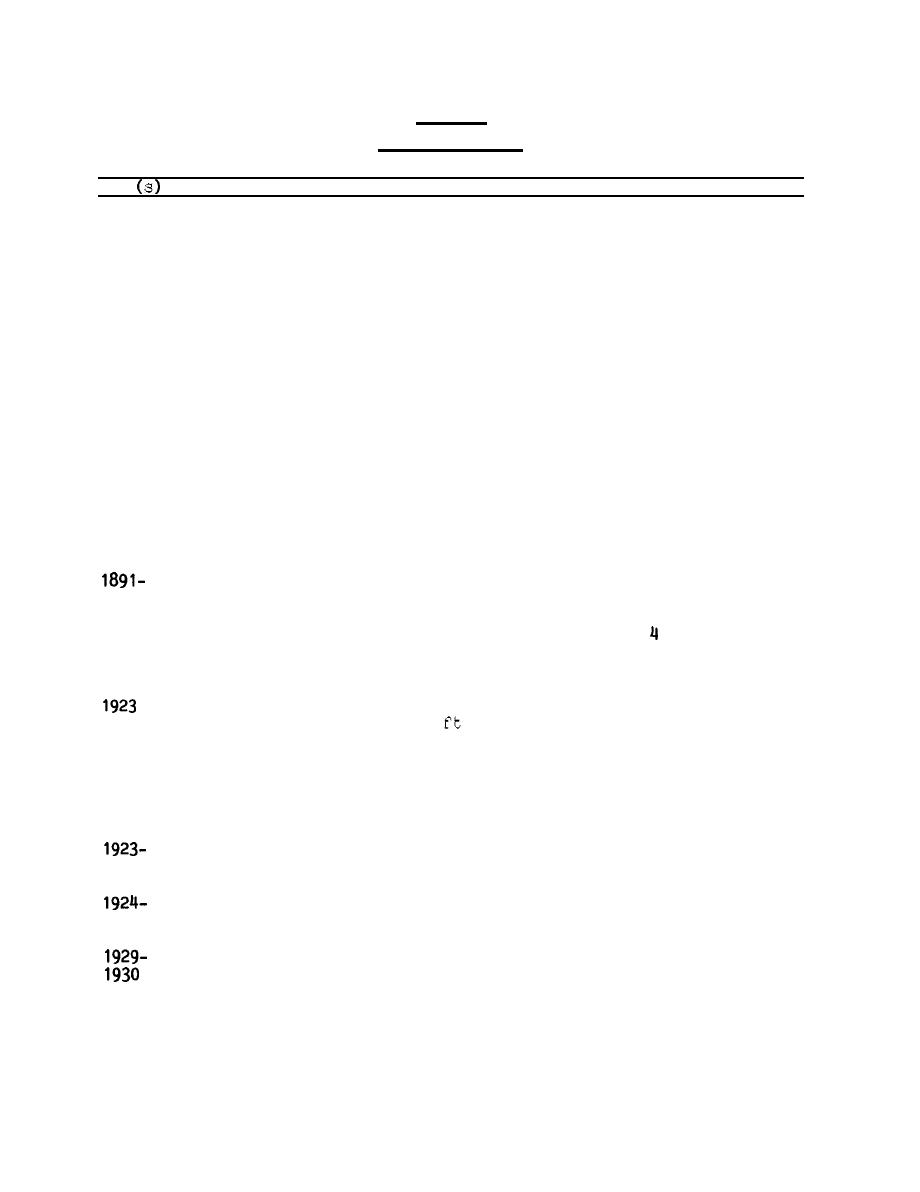
Table 23
Coos Bay
Coos Bay, Oregon
Date
Construction and Rehabilitation History
1878
A study was authorized for improvement of navigation at Coos Bay,
Oregon. The study recommended construction of a half-tide drift wall
or jetty extending seaward from Fossil Point, a second wall (parallel
to the first) to confine the channel, and sand fences to prevent
wind-blown sand from extending the spit.
The project was adopted then referred to the Board of Engineers for
1879
the Pacific Coast who recommended construction of a spur jetty from a
point 250 yd below the northern extremity of Fossil Point. The
project was authorized in November 1879.
1880
Construction of the spur jetty was initiated.
1884
The spur jetty was constructed at half-tide height to a 1 , 8 2 5 - f t
length.
1889
The Board of Engineers recommended that two parallel jetties be con-
structed to confine the channel and that work on the spur jetty be
stopped.
The north jetty was constructed to a 9 , 6 0 0 - f t length from the high
waterline on the seaward side of the north spit. The jetty was of
1895
rubble-mound construction on a foundation mattress of pole and brush.
Stone used averaged 2 tons with 25 percent weighing to 10 tons and
up to 17 tons at the head. The outer 600 ft quickly subsided and was
replaced twice by 1900.
No maintenance work has been done on the north jetty since 1900. The
outer 1,000 ft were 12 to 20
below mean low water. The north
jetty fixed the direction of the channel but was unable to maintain
satisfactory depths in the channel. The project was therefore modi-
fied to restore the north jetty and construct a south jetty in ac-
cordance with the project recommended by the Board of Engineers in
1889.
The north jetty was restored to design height, using 690,212 tons of
stone.
1929
The south jetty was constructed.
1928
The south jetty was repaired, and a concrete cap was placed on the
outer 650 ft of the jetty.
(Continued)
116



 Previous Page
Previous Page
